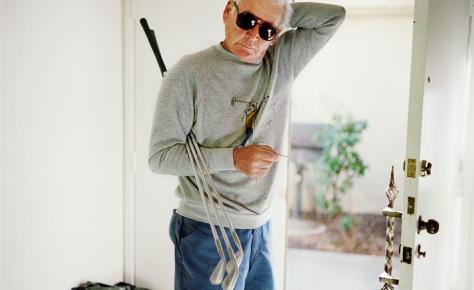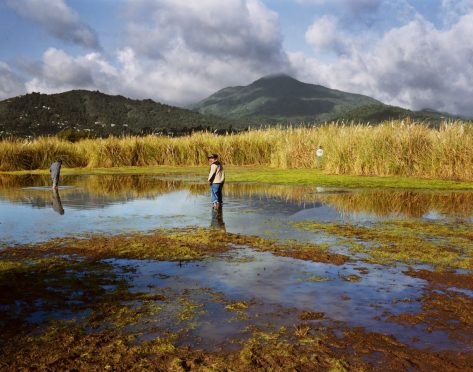Assignment 5 is the final piece of work for Identity and Place and is a self-directed assignment. Identity and Place as a unit is about thinking about how to tell stories of people, their lives and how the place they come from effects that.
While I was working on the unit my mother died and I found myself going though all her belongings. She never threw anything away. I found a massive collection of photographs from her childhood on, together with ones of her family, friends and all the places she had been to. Most of these I had never seen before. They were collected in the traditional manner- not filed or sorted in any way but left in old print envelopes and stored in shoeboxes. Very few were labelled (and of the labelled envelopes some were clearly wrong – presumably reused). There was one early album that had a few of the people named that went up to about 1945. Mixed in with the photographs were postcards, cuttings from newspapers, tickets, bills of sale for every house she had lived in and letters. I also found a written story of her and her family’s life up to the end of WWII that had partly been written by her and partly by one of her brothers and a copy of a dissertation done by my cousin which told the hidden story of the treatment of Germans in America in WWII and the internment of many of them which included quotes from my mother and her family.
My mother had always been very reluctant to talk about her past life and I knew very little of it. In the final months of her life she had agreed to talk a little and we recorded what she said.
Assignment 5 is made up of some of her verbal story, 7 minutes cut from 2 hours of recording, together with a small fraction of the vast archive of pictures and memorabilia she had collected. Some of the photographs are captioned with explanations from her written story.
This piece leads directly on from the video I made for Exercise 4.5 – My Mother’s Memories. In that case I was interpreting my emotions about her words though my own images, while here I am using her own archives to tell the story more directly. It is more factual, more telling and I find it almost unbearable to watch.
Research:
Much of the research for this comes from the work done earlier in IAP and is described in Assignment 4. I have also looked at archival work and read the fascinating essay on it by Thinking about Archives by Susan Breakell. To some extent I approached this as a curator/archivist and so found the discussion I attended on this type of work by Susan Bright (see: Susan Bright Lecture) helpful for background knowledge. I have found several photographers work fed directly into my thoughts on how to present work that is essentially a memory piece and a tribute. Murmurs by Martina Lindqvist talks about what is important at the end of life. Mother by Paul Graham (Graham, 2019) I find almost unbearably poignant. Larry Sultan in Pictures from Home (Sultan, 2017) was inspiring in its mix of found snapshots, storytelling and new photography. Deborah Orloff in Elusive Memory (Orloff, s.d.) talks about the connection between photographs and memory as do both Marianne Hirsch – Family Frames (Hirsch, 2012) and Annette Kuhn – Family secrets (Kuhn, 2002).
I have also done some research into the ways other people have used familial archives to produce pieces of work. Michael Abrams – Welcome to Springfield (Abrams, 2012)invented a whole story about a fictional town. Daniel Meadows – Digital Stories (Meadows, s.d.)used his own memories and archive photos to produce short videos. Jim Goldberg – Gene (Goldberg, 2018) used the archive and story of an elderly man in Gene to tell about life and memories at old age, not dissimilar to the work of Julian Germain in For every minute you are angry you lose sixty seconds of happiness (Germain and Snelling, 2011). Alexia Webster – Tracing Lives (Webster, 2020) and Catherine Panebianco (Panebianco, s.d.) both repurposed family images and mixed them with present day images to tell their personal stories.
Planning:
I considered two ways of showing this
- A video
- A photobook with short quotes from her words
- I eventually decided on a video because I felt that actually hearing her talk about her experiences was important, as her voice echoes her emotions.
- Following discussion and feedback from the online IAP support network I have also made a photobook (a work in progress) from the images and others to form a lasting record for our family (see: Further Reflection on Assignment 5 with Added Book – My Mother’s Story)
Practice:
- I did a written transcript of all the recordings, then ordered them in time and tried to pick out the most important pieces. This was difficult and the recording could have easily lasted 20 minutes or more to give the details.
- The level of her voice varies, partly I think due to how tired she was at any given moment, but also to how difficult she was finding telling some parts of the story.
- I then went through all her collected memorabilia and found the photographs and cuttings that were relevant to this time period.
- I made a version on a black background and on a white one. I eventually chose the black as it seemed to be clearer and fit the subject matter better.
- The video was uploaded to Vimeo
- Following feedback from my tutor I added a slightly more personal touch at the beginning and end of the original video.
Video:
Learning Points:
- Looking though archives takes a long time, and you need to be ruthless about choosing images/memorabilia to use
- This might have been a better project to do when I had achieved some emotional distance
- It is very difficult to decide what is of more general interest against specific family interest
- Small and old snapshots are hard to enlarge successfully as every mark shows
- But – are the marks actually part of the story?
- I need to start to archive (note use of the noun archive as a verb) my own work more carefully with more tags and names attached to people
- Feedback from both peers and tutor really helps to make a more coherent piece of work.
Summary:
This was a difficult piece of work to do and I am not convinced I have done it justice. I may yet rework it in the future. When reading the latest aperture I came across this quote ‘The archive is one of the spaces where that exchange takes place, where the living go to encounter the dead. It’s a strange business, summoning ghosts. For the most part the work is repetitive, an orderly, laborious process of logging and transcribing. But every once in a while, something happens. You look down, and beneath the surface someone looks back’ (Laing, 2020).
References:
Abrams, M. (2012) Welcome to Springfield. Washington, D.C.: Loosestrife Editions.
Germain, J. and Snelling, C. (2011) For every minute you are angry you lose sixty seconds of happiness: portrait of an elderly gentleman. (Second edition) London: Mack.
Goldberg (2018) Jim Goldberg’s New Book is a Tender Portrait of Old Age • Magnum Photos. At: https://www.magnumphotos.com/arts-culture/society-arts-culture/jim-goldberg-gene/ (Accessed 09/09/2020).
Graham, P. (2019) Mother. London: MACK.
Hirsch, M. (2012) Family frames: photography, narrative, and postmemory. Cambridge, Mass.: Harvard Univ. Press.
Kuhn, A. (2002) Family secrets: acts of memory and imagination. (New ed) London; New York: Verso.
Laing, O. (2020) ‘A Fold in Time’ In: aperture 239 p.95
Meadows, D. (s.d.) Digital Stories on Vimeo. At: https://vimeo.com/showcase/5268983 (Accessed 10/09/2020).
Orloff, D. (s.d.) Deborah Orloff. At: http://deborahorloff.com/ (Accessed 10/08/2020).
Panebianco, C. (s.d.) catherine panebianco. At: http://www.catherinepanebianco.com (Accessed 09/09/2020).
Sultan, L. (ed.) (2017) Pictures from home – Larry Sultan. London: Mack.
Webster, A. (2020) ‘Tracing lives: a visual response to coronavirus’ In: The Guardian 26/06/2020 At: https://www.theguardian.com/artanddesign/2020/jun/26/tracing-lives-visual-response-to-coronavirus (Accessed 30/08/2020).



